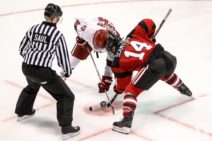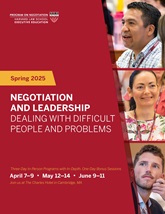
Negotiations for a new collective bargaining agreement (CBA) between the National Hockey League Player’s Association (NHLPA) and the NHL’s team owners took a tumultuous turn back in August of 2012, a month before the agreement’s looming expiration date of September 15.
In their initial offer, the owners had proposed reducing the player’s percentage of hockey-related revenue from 57% to 43%. The owners were trying to match the achievements of National Football League and National Basketball Association owners in their recent negotiations – namely, a reduction in player revenue-sharing to about 50%, explained Jeff Z. Klein in an analysis in the New York Times.
Using your skills in negotiations
On August 14, Donald Fehr, the NHLPA’s lead negotiator, issued a surprising counteroffer to the owners’ initial offer. The union’s plan separates player salaries from a percentage of league revenue, writes Klein. Instead, in the first year of the proposed three-year contract, players would get a raise of 2% of $1.88 billion, their share of the last NHL season’s revenue. The raise would double to 4% the following year and rise again to 6% the year after that. As a comparison, average player salaries have grown by 7.1% since the 2004-2005 NHL lockout. After three years, the players could choose to revert to the existing CBA, according to Klein.
Fehr framed the proposal as a partnership in which the players and the league’s wealthy clubs would team up to help the league’s more struggling clubs. Under the proposal, up to $250 million that would be saved by reducing the players’ cut of NHL revenues would be divided among financially struggling teams.
Media observers roundly viewed the NHLPA proposal as innovative and collaborative, with Sporting News going so far as to call it, “a forward-thinking stroke of genius.” But as Klein explained, the plan is a “nonstarter” for team owners, as it does not make deep enough cuts to player salaries, from their point of view. The difference in player salaries between the two proposals is a whopping $435 million according to one analysis – leaving a large gap to bridge. The owners’ desire to severely scale back players’ revenue sharing far outweighs their concern about being perceived as “villains in the eyes of the public,” writes Klein.
SI.com writer Stu Hackel praised union negotiator Fehr for using, “the language of compromise rather than confrontation.” Whether league owners will be willing to match that spirit and hammer out an agreement with the NHLPA remains to be seen.
Both sides would have been wise to abandon hard-bargaining positions and seek tradeoffs among the many issues at stake, which also include salary caps and free agency. If the two sides couldn’t come together, their negotiations could escalate into the type of conflict they faced in 2004, when the players were locked out for an entire season. The lockout earned the NHL the infamous distinction of being the North American professional sports league to lose an entire season of games due to a labor conflict. The league could have had difficulty rebounding from another canceled season, particularly in the midst of an economic downturn.
How do you think NHL negotiations can help at the bargaining table? Share your thoughts in the comments.
Editor’s note: This article as originally published in 2012 and has been updated.




